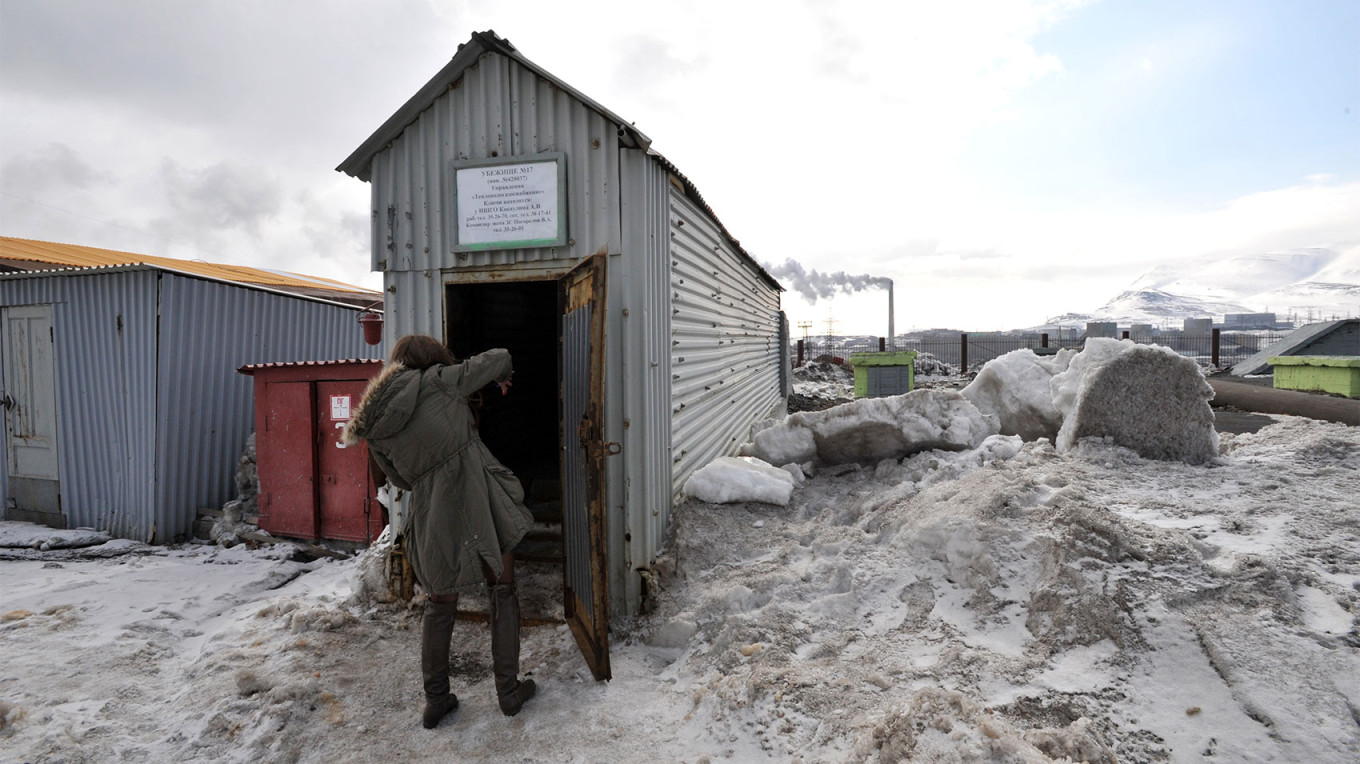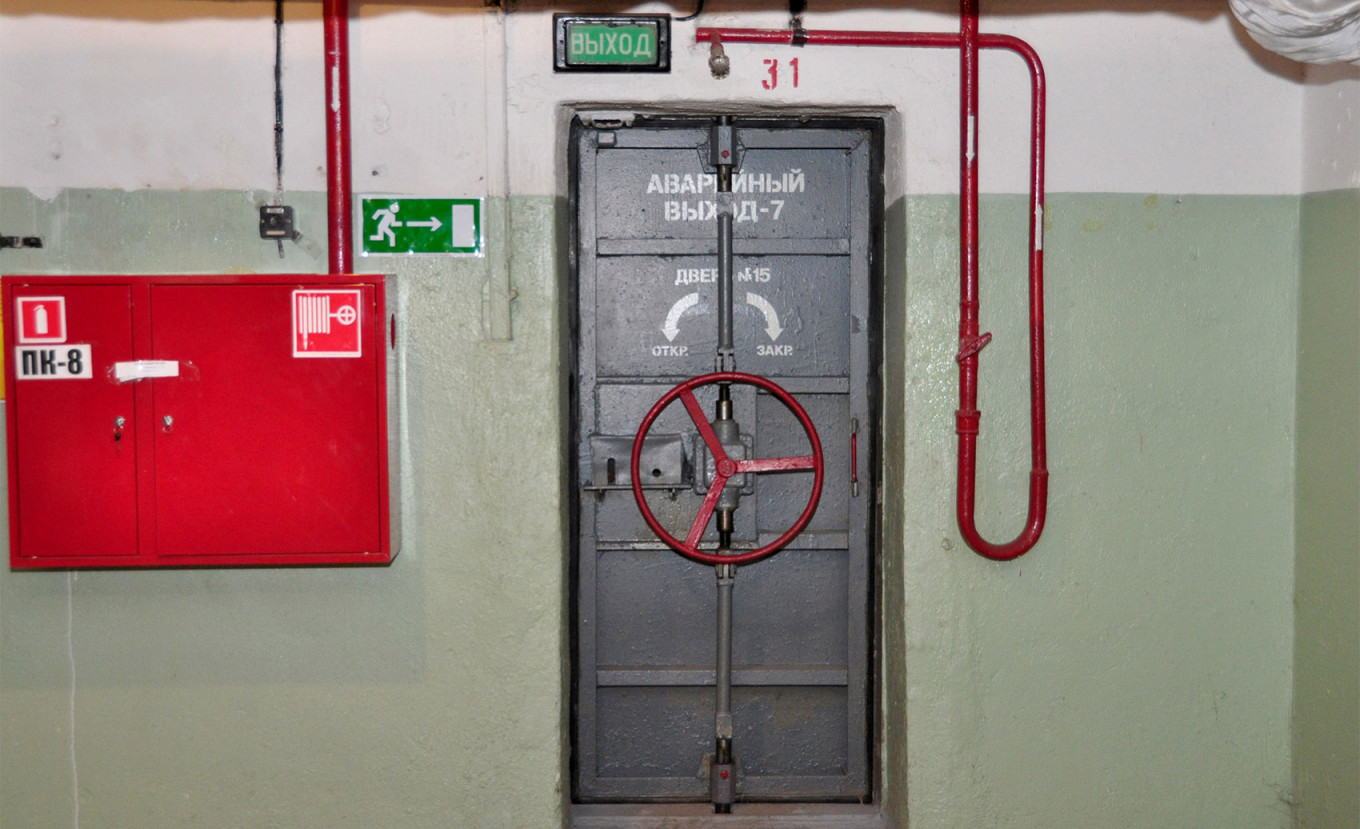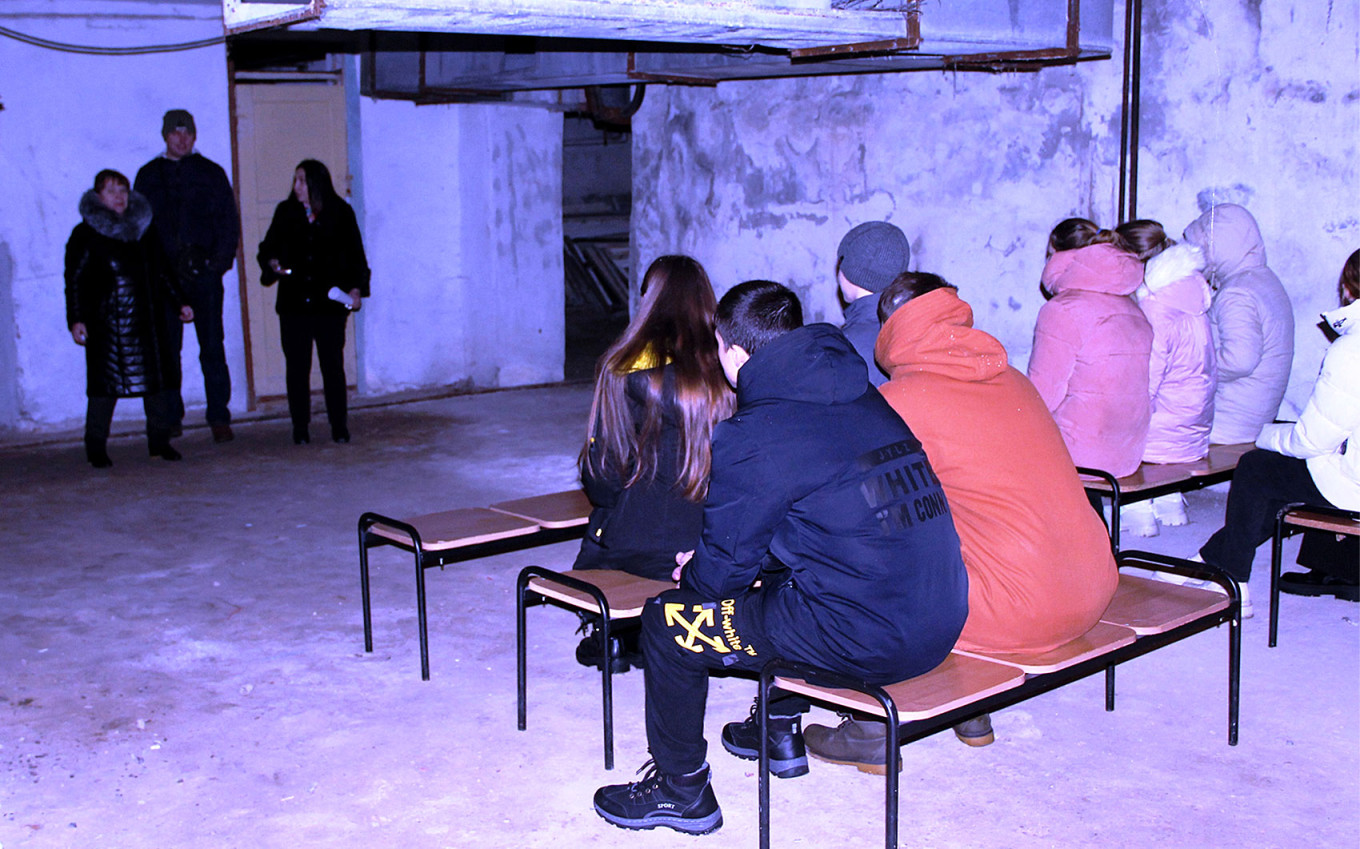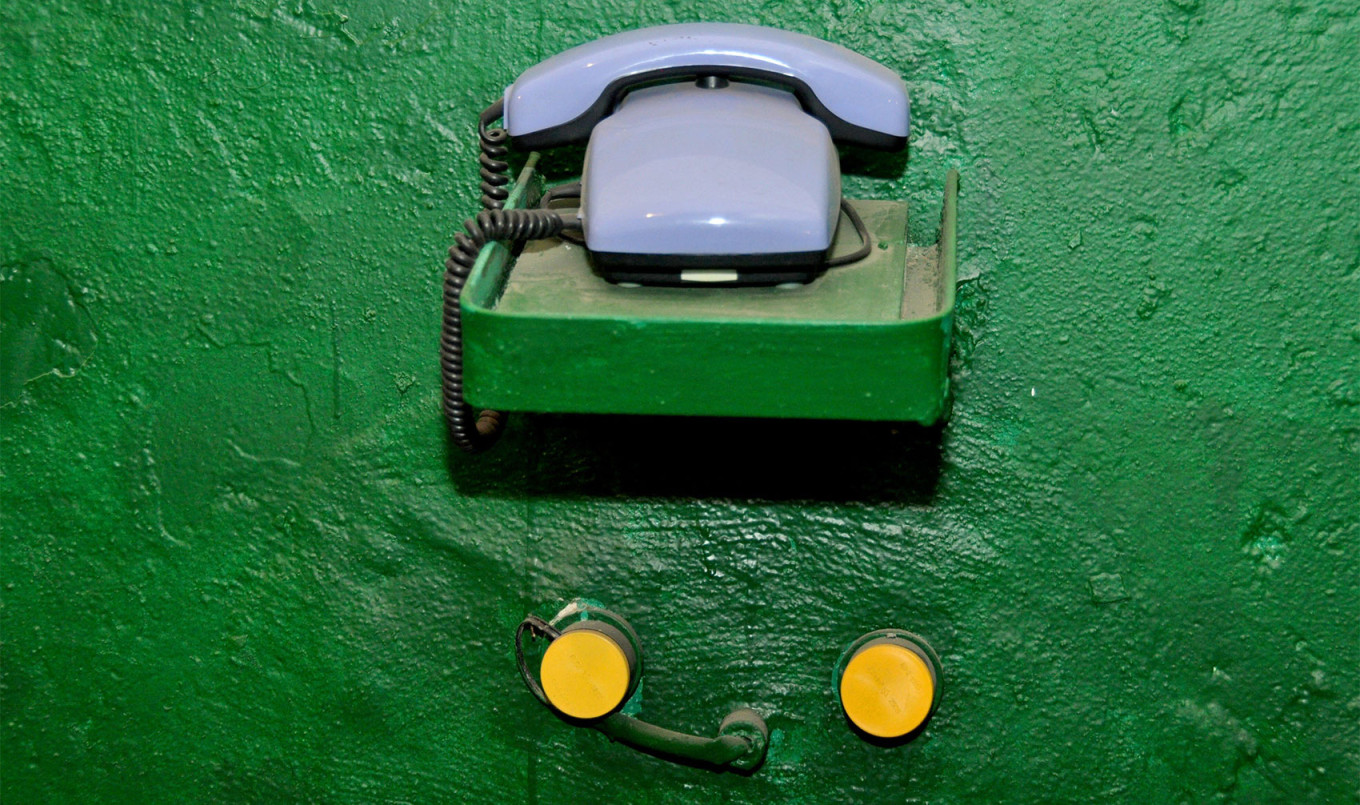Bomb shelters across Russia are undergoing systematic inspections and repairs following a Kremlin order to upgrade the country’s crumbling Soviet-era infrastructure, according to current and former officials who spoke to The Moscow Times.
Many of Russia’s thousands of bunkers, reinforced cellars and other safe hideouts have been mothballed for decades. But as the war in Ukraine drags on, local authorities appear to be spending hundreds of millions of rubles to again make them fit for habitation.
“A decision to inspect the network of bomb shelters was made by the government in the spring,” said one Russian official, citing knowledge of government meetings that have taken place on the subject.
“The command for a large-scale inspection and to put things right was given by the Emergency Situations Ministry, the Defense Ministry and [other] civilian ministries.”
The overhaul of the country’s bomb shelter network comes against the backdrop of Kremlin nuclear saber-rattling and a growing militarization of daily life as the fighting in Ukraine creeps toward Russia’s heartland regions.
In particular, three attacks on air bases hundreds of kilometers inside Russia’s borders in December were attributed to Ukrainian drones. In line with its policy on attacks inside Russia, Kyiv has not confirmed that it was involved.

While Russian officials have not publicly announced a national drive to upgrade bomb shelters, efforts by local authorities to overhaul the country’s civil defense network have been widely reported for months.
The Moscow Times spoke with four current and former Russian officials who confirmed — for the first time — that upgrades were taking place on orders from the government in Moscow.
The checks and repairs began after the invasion of Ukraine in February 2022 and will continue into this year, according to the current Russian official, who requested anonymity to speak freely.
While the Kremlin issued a decree ordering some regions in western Russia to prepare for possible military conflict under a heightened “alert” level in October, open-source data and The Moscow Times’ sources suggest that this process — to differing extents — is actually happening all over the country.
For example, local authorities in the southern Krasnodar region will reportedly spend over 6 million rubles ($260,000) on bomb shelters this year, while 50 million rubles ($712,000) will be spent in Nizhny Novgorod and almost a million rubles ($14,240) in the city of Ryazan.
The authorities in Kazan, on the Volga River, said last month that about 30% of the city’s bomb shelters were not in a fit state to house people. Instead, officials said they will determine if the city’s metro system can serve as a bomb shelter.

The existence of a directive from Moscow to upgrade bomb shelters was confirmed to The Moscow Times by a senior official in the administration of one of Russia’s Far East regions, more than 7,000 kilometers from frontlines in Ukraine.
“An order was given from Moscow to carry out these works everywhere — inspection and repair,” said the official, who requested anonymity to discuss the issue.
The Kremlin’s problem, however, is that most of the country’s bomb shelters, which are supposed to be maintained by local authorities, have been left in a state of disrepair or abandoned since the end of the Soviet Union.
Local authorities appear to be trying rapidly to address some of these issues.
“After mobilization, [upgrading bomb shelters] looks like a necessary measure and an expression of concern on behalf of the state toward ordinary people,” said Oleg Ignatov, a senior analyst at the International Crisis Group NGO.
Political analyst Abbas Gallyamov said that the efforts to upgrade bomb shelters were also being driven by local officials eager to impress their superiors.
“Every bureaucrat is trying to conform to the agenda as they see it,” Gallyamov, a former speechwriter for President Vladimir Putin, told The Moscow Times.

“It’s a way of shielding oneself from possible claims from the big bosses: ‘Why aren’t you prepared? Can’t you see what’s going on?!’”
Hundreds of government tenders appear on the official portal for tenders, Zakupki.gov.ru, seeking companies to bid for bomb shelter upgrade contracts in regions all over the country.
Tenders include those for ventilation repair, waterproofing, door replacement, and air filter and lighting installation.
In one example, a 3.8-million-ruble ($54,100) tender for waterproofing work on a bomb shelter in Samara region was listed in November.
“No one needed them [bomb shelters] after the collapse of the Soviet Union. But now, due to the situation on the frontlines, the Kremlin has ordered for everything to be sorted out,” an official in one western Russian region told The Moscow Times.
One conclusion drawn from the nationwide inspections has apparently been that the country lacks enough bomb shelters to serve its current population.
Officials in the northern city of Petrozavodsk said last month that public bomb shelters could only house one-eighth of the city’s residents.

This deficit may, in part, be due to many Soviet-built bomb shelters having been sold or rented out on the private market.
A renovated Cold War-era bunker with pink walls and vintage chandeliers was put up for sale in Petrozavodsk for 15 million rubles ($216,000) at the end of last year. And bomb shelters were being leased by the authorities in the Far East port city of Vladivostok in November, according to local media reports.
In some cases, such deals have been deemed illegal.
A Perm city court in the Ural Mountains opened a criminal case last summer against a businessman for using a bomb shelter as a warehouse and not equipping it with airtight doors, air filters and a supply of water, local media reported.
One former official who spoke to The Moscow Times linked the state’s newfound interest in bomb shelters to heightened fears of nuclear war following Putin’s order to put Russia’s nuclear forces on “high alert” at the end of February.

“[The ‘high alert’] is just the tip of the iceberg. Bomb shelters and other civil defense requirements are the invisible part of the iceberg,” said the retired official, who cited knowledge of meetings on the subject.
At the same time, the upgrades to bomb shelters all over the country appear to be just one aspect of the growing militarization of Russian society since the start of the Ukraine war. This militarization has also been evident in the mobilization of hundreds of thousands of men to serve in the Armed Forces as well as the installation of air-defense systems in central Moscow.
In some cases, apparently seeking to head off panic, local authorities have sought to downplay the bomb shelter renovations.
Officials in the Saratov region, hundreds of miles from the frontlines in Ukraine, began euphemistically referring to bomb shelters as “deep lodgings” in December.
But there was no hiding the installation this week of signs directing locals to bomb shelters in the Ural Mountains city of Nizhny Tagil.
“It’s becoming scary to live,” local user Oksana Balina wrote on social network VKontakte underneath a post about the development.
Source : The Moscow Times









